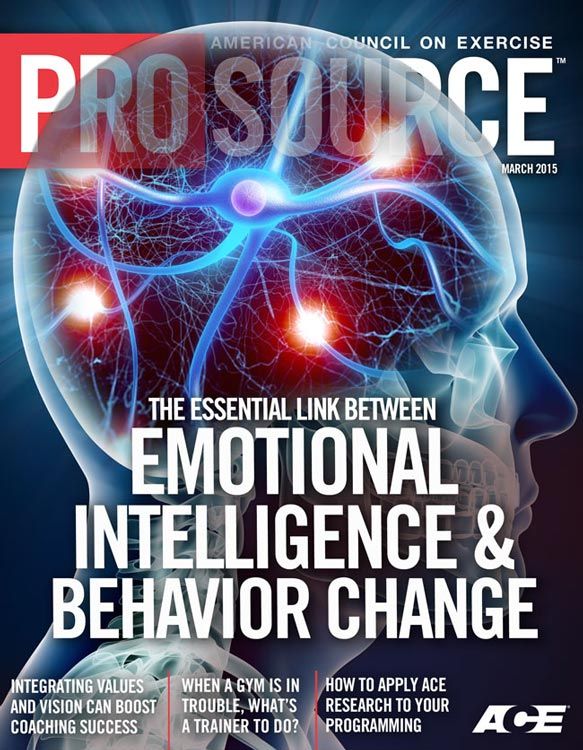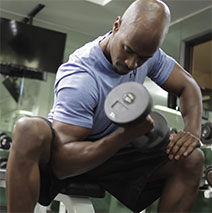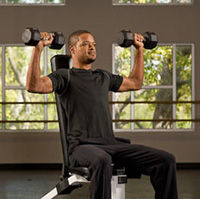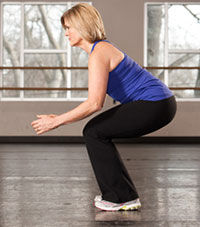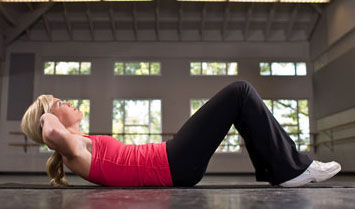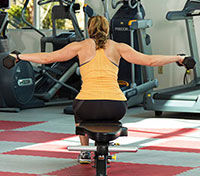
More than a decade ago, ACE began sponsoring a series of research studies focusing on the “best exercises” to work certain muscles or muscle groups. These are the exercises that elicit the most muscle activation for the targeted muscle or muscle group. For example, “ACE Study Reveals Best Biceps Exercises” (July, 2014) examined eight biceps exercises and found that the concentration curl elicited the highest degree of muscle activation, and by a fairly wide margin (see box for links to six of the most recent “Best Exercise” studies).
Meanwhile, ACE’s manuals have focused on the improvement of client function and health, primarily through the implementation of the ACE Integrated Fitness Training® (ACE IFT®) Model. So how does all of this research on targeted training fit in with the organization’s focus on improving the function, health and fitness of clients? And how do you know which approach is best for your clients? Does it have to be one or the other?
So far, ACE has published the following research on targeted training, all spearheaded by John Porcari, Ph.D., department head of the Clinical Exercise Program at the University of Wisconsin–Lacrosse:
Targeted Exercise and Functional Fitness
According to Sabrena Merrill, M.S., exercise physiologist, ACE Education Content Development Expert and a technical editor of each of ACE’s textbooks, the two concepts are far from mutually exclusive. In fact, the ability to effectively integrate functional and targeted training is absolutely essential for client success.
Consider the following: You are conducting a series of functional movement assessments to evaluate an older client’s ability to perform the five primary movement patterns described in the ACE Personal Trainer Manual (5th ed.) and notice that the client has a faulty movement pattern during the body-weight squat. Specifically, the client exhibits weakness in the glutes and is overly reliant on the strength of the quadriceps. At this point, you need to select an exercise to address this imbalance—and this is where the targeted-training research comes in. You will want to have the client perform the most effective exercise to strengthen the gluteal muscles, which will lead to improvements in function and enhance overall quality of life.
The end goal for you as a health and fitness professional (to improve the client’s function during activities of daily living, like rising from a chair more easily) may be far different from the headlines shouting from the cover of a consumer magazine (to look sexier in those skinny jeans!), but the process is the same. In this way, targeted training works hand-in-hand with functional training.
With some clients, Merrill points out, targeted training may be the most appropriate approach to reaching their goals. For example, she says, “If a client’s goals include improved muscularity and a desire to address strength imbalances, then targeting specific muscles with a focus on building strength and hypertrophy is appropriate.”
In addition, health and fitness professionals should try to avoid getting caught up entirely in improving function, says Merrill, as this can be an endless battle that can be a considerable drain on a client’s motivation. “You have to let people work toward their goals,” she says. For example, if a client’s goals include losing weight and improving body composition (and let’s face it, those are the goals of most gym-goers), then stimulating hypertrophy by working under external loads is the best option, as it will lead to the development of more lean mass. Exercises in the early phases of the ACE IFT Model (i.e., stability and mobility training and movement training), while essential forms of initial training in many cases, are not the best means of meeting these long-term goals. Once a client has adequate experience and a baseline of proper function, these early-phase movements are great options during the warm-up of a session, but external loads are necessary in the quest to improve body composition.
Making the Most of Your Time
Dr. John Porcari, Ph.D., department head of the Clinical Exercise Program at the University of Wisconsin–Lacrosse and lead researcher on the "best exercises" studies, points out that one of the most common reasons people give for abandoning a workout regimen is “lack of time.”
“This is why this type of research is so valuable,” he says. “It allows clients to maximize their time—and maximize the effectiveness of their workouts—by performing those exercises with the most benefit.”
If a client has time for a 45-minute strength-training workout three times a week, designing a circuit that features the most effective exercise for each body part is a great option (see sidebar). As Dr. Porcari asks, "Why would you have a client perform the third best exercise?”
Dr. Porcari also points out that many of the exercises identified as most effective in the research are very functional in nature, and many of them require little or no equipment, such as lunges, squats and triangle push-ups. Looking at the research also allows you to modify workouts to suit the needs of a client, as well as equipment availability. For example, if you have a client who can only commit to visiting the facility twice a week, you can use the research to help you select the best at-home exercises and encourage the client to perform a third workout on his or her own. If the client is performing the barbell bench press in the gym (with you as a spotter), he or she can replace this exercise with dips when working out at home, as dips* are the best chest exercise one can perform without gym-based equipment, according to Dr. Porcari’s research. While dips are not as effective as the barbell bench press, you are providing the client with a research-based alternative that adds variety to the routine and allows him or her to perform a workout without your direct guidance.
*Although dips are a functional movement, they are often considered controversial as an exercise due to the propensity for increased stresses across the anterior portion of the shoulder joint. When considering having your clients perform any variation of dips, always evaluate the potential risks versus benefits and consider whether or not there is a better exercise alternative. Though effective for some, it may not be the safest choice for all your clients.
The Ultimate Circuit
The following table presents the best exercises for each muscle or muscle group, as determined by Dr. Porcari’s research. You can use this list to put together a “best exercises” strength-training circuit for your clients. Be sure that the exercises you choose are appropriate for the individual client.
1 Squats also target the quadriceps muscles.
2 Dr. Porcari’s research has not included back exercises to date. Sabrena Merrill recommends pull-ups as a functional exercise to target the muscles of the back.
In Conclusion
It’s evident that not only is targeted training not the antithesis of functional training, it is an essential element of improving a client’s function, health and fitness. When you really get down to it, whether working with an elite athlete trying to improve performance or an older adult working to develop the strength to carry groceries and climb stairs, eventually you have to choose the best exercise for the situation. Citing research like that conducted by Dr. Porcari and his team at the University of Wisconsin–LaCrosse will give you credibility when discussing the creation of an exercise program with a client. So next time a client says, “but I’ve always done push-ups to strengthen my chest,” you can share research to explain that there are better options.





 by
by 